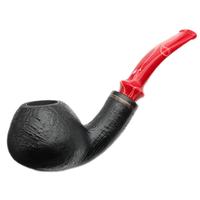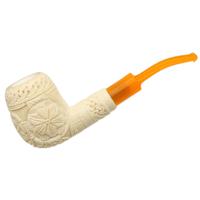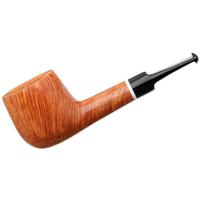I am confused, I have read numerous posts about Aro's not getting any better, yet a blend like McClellands Christmas Cheer says "grows more flavourful as it ages" ? Huh?
Aros and Aging
- Thread starter salmonfisher
- Start date
You are using an out of date browser. It may not display this or other websites correctly.
You should upgrade or use an alternative browser.
You should upgrade or use an alternative browser.
- Status
- Not open for further replies.
Christmas Cheer is a matured Virginia, not an aromatic. I think the point of aging aromatics, is they don't get better. They stay the same, but will eventually lose a bit of the flavoring after enough time, as junkyard stated. That probably takes a while, so don't be too worried about buying aromatics and letting them sit in your cellar. Just don't expect massive improvement.
I don't really care for aero's but was given a couple of pounds of the stuff when I retired in '91. (To my young Marines, tobacco was tobacco). I don't know what it is, but had a strong apple flavor when I tried to smoke it back then. It sat in a pickle jar for over 22 years when I tried some last year, and had become smokeable as far as I'm concerned. It's not one of my favorites, but took it to the fish camp and have been smoking it out in the boat when I'm really not paying to much attention... Hey, it's two pounds of tobacco I almost threw away!
Indeed, Christmas Cheer is not an aromatic. But regarding aromatics and ageing, this is from the Ask GL Pease section:
Another great query from Arno: On the Dutch forum we are having a discussion about the aging of aromatic tobaccos. A first I said that the used aromas have nothing to do with the aging process. It is all about the used tobaccos. You know, a lot of Virginias? The blend will improve by aging. A lot of Burley? The mixture will pretty much stay the same. But now I am having some second thoughts; do the sugars of the aromas do anything with the tobaccos when they age? So my question is: do the aromas that are used in a blend affect the aging process?
A: It’s a complicated question, Arno. In some cases, the really heavily sauced aromatics that are popular in the US, things probably aren’t likely to change much over time. These tobaccos often have quite a bit of Propylene Glycol in them as a humectant and carrier of their aromatic oils, and are mostly burley based, a sort of double-whammy when it comes to the finer subtleties of aging. In my own experiments with them, they’ve seemed pretty stable over quite a long time frame, the biggest change being some degradation of their aromatic characteristics. As far as burleys go, it’s not quite true that they don’t age, though they do so differently from virginias. Burleys become mellower over time, losing some of the astringency they can present when young. And, as I’ve often said, they have a sort of chameleon-like quality in that they take on the taste and aromas of the tobaccos that surround them over time, so their presence often becomes less noticeable as an isolated characteristic of the blend, instead, adding body and weight to the smoke, which can be a good thing.
As you suspect, a blend that is predominately based on virginias or other leaf that’s known to age well, with sauces that are delicately applied, and more natural flavorings, will still experience significant change due to long-term aging.
Another consideration is whether or not the aromatic components overshadow the tobaccos natural taste. If it does, the nuances gained during the aging process might be lost in the noise. Further, some aromatic components can degrade or change over time, so what you find in that tin five years hence may not be as pleasing as it is today. I think the best strategy would be to smoke heavily sauced aromatics in their youth, and devote the cellar space to more natural blends with fewer additives.
Another great query from Arno: On the Dutch forum we are having a discussion about the aging of aromatic tobaccos. A first I said that the used aromas have nothing to do with the aging process. It is all about the used tobaccos. You know, a lot of Virginias? The blend will improve by aging. A lot of Burley? The mixture will pretty much stay the same. But now I am having some second thoughts; do the sugars of the aromas do anything with the tobaccos when they age? So my question is: do the aromas that are used in a blend affect the aging process?
A: It’s a complicated question, Arno. In some cases, the really heavily sauced aromatics that are popular in the US, things probably aren’t likely to change much over time. These tobaccos often have quite a bit of Propylene Glycol in them as a humectant and carrier of their aromatic oils, and are mostly burley based, a sort of double-whammy when it comes to the finer subtleties of aging. In my own experiments with them, they’ve seemed pretty stable over quite a long time frame, the biggest change being some degradation of their aromatic characteristics. As far as burleys go, it’s not quite true that they don’t age, though they do so differently from virginias. Burleys become mellower over time, losing some of the astringency they can present when young. And, as I’ve often said, they have a sort of chameleon-like quality in that they take on the taste and aromas of the tobaccos that surround them over time, so their presence often becomes less noticeable as an isolated characteristic of the blend, instead, adding body and weight to the smoke, which can be a good thing.
As you suspect, a blend that is predominately based on virginias or other leaf that’s known to age well, with sauces that are delicately applied, and more natural flavorings, will still experience significant change due to long-term aging.
Another consideration is whether or not the aromatic components overshadow the tobaccos natural taste. If it does, the nuances gained during the aging process might be lost in the noise. Further, some aromatic components can degrade or change over time, so what you find in that tin five years hence may not be as pleasing as it is today. I think the best strategy would be to smoke heavily sauced aromatics in their youth, and devote the cellar space to more natural blends with fewer additives.
I've tried vacuum sealed aromatics that were 3-5 years old and they were still great. I've also cellared bulk in mason jars and 2-3 years they have been fine, maybe slightly softer on the top note. The way to go is the tins if you're just stocking up to have a supply on aromatics if you absolutely want to stretch them out as long as possible.
Salmon:
I was going to suggest checking out eBay for older tins of aromatics to see for yourself how they might hold up. But then I realized that every aromatic will behave differently over time, depending of course on the constituent tobaccos but also on what flavorings/scents were added and in what manner. Which makes me think it would be impossible to make any generalizations about aging aromatics. But if you have a favorite now, then it could be valuable to check eBay for older tins of that specific blend to see how it's fared.
My guess -- and it's purely that -- is that an aromatic could easily remain sealed in its tin for more than a decade without any noticeable changes.
Bob
I was going to suggest checking out eBay for older tins of aromatics to see for yourself how they might hold up. But then I realized that every aromatic will behave differently over time, depending of course on the constituent tobaccos but also on what flavorings/scents were added and in what manner. Which makes me think it would be impossible to make any generalizations about aging aromatics. But if you have a favorite now, then it could be valuable to check eBay for older tins of that specific blend to see how it's fared.
My guess -- and it's purely that -- is that an aromatic could easily remain sealed in its tin for more than a decade without any noticeable changes.
Bob
- Status
- Not open for further replies.












